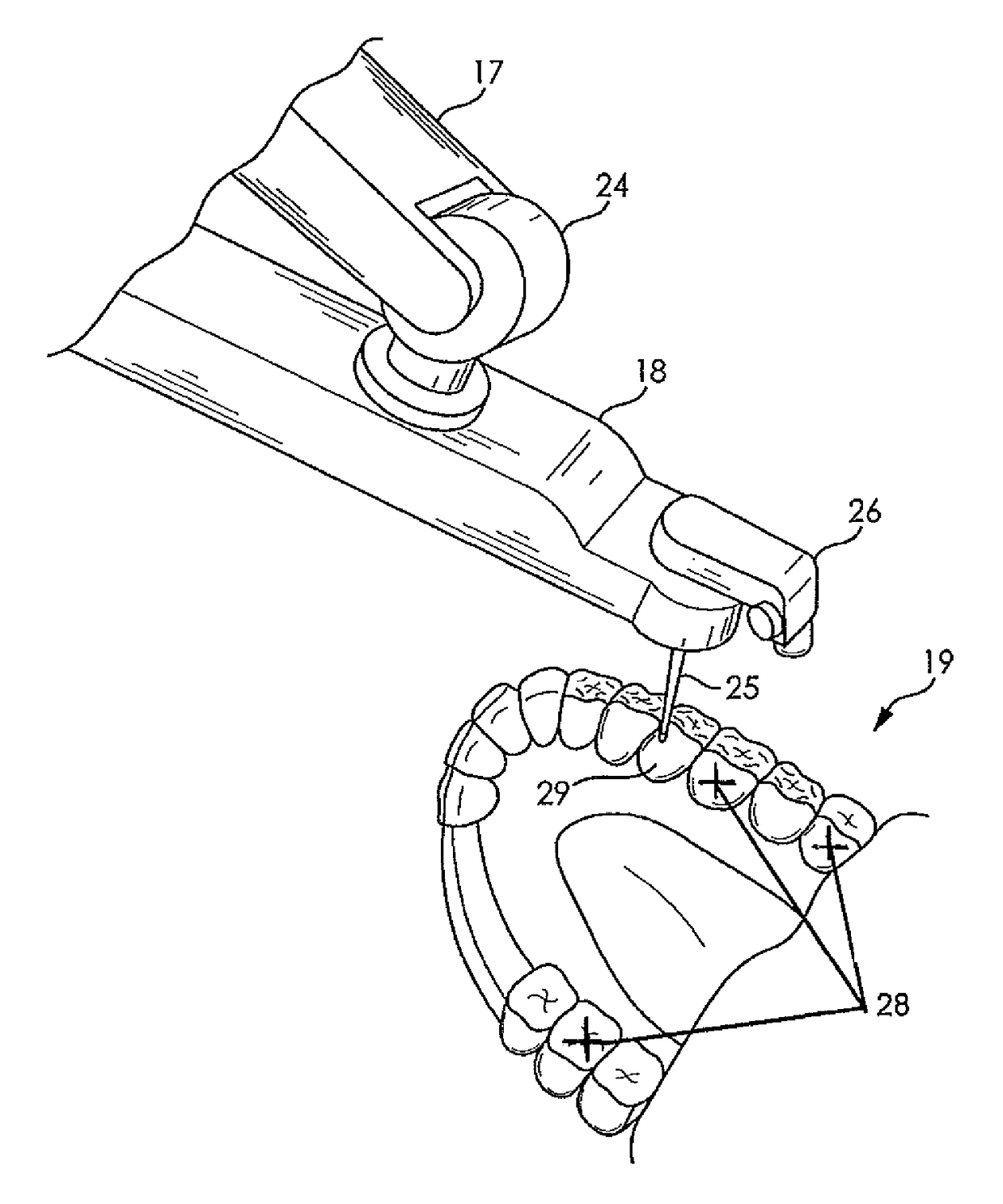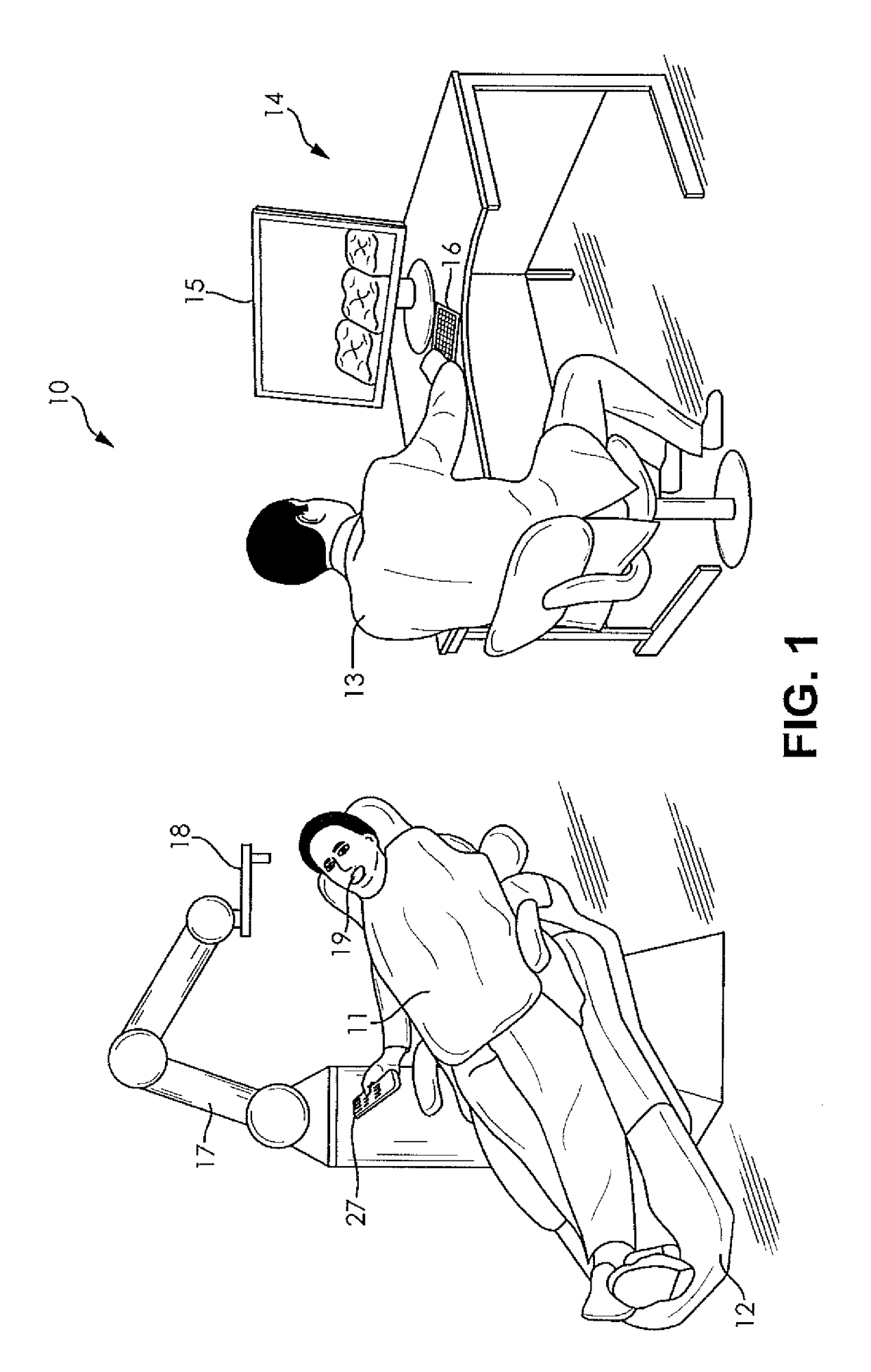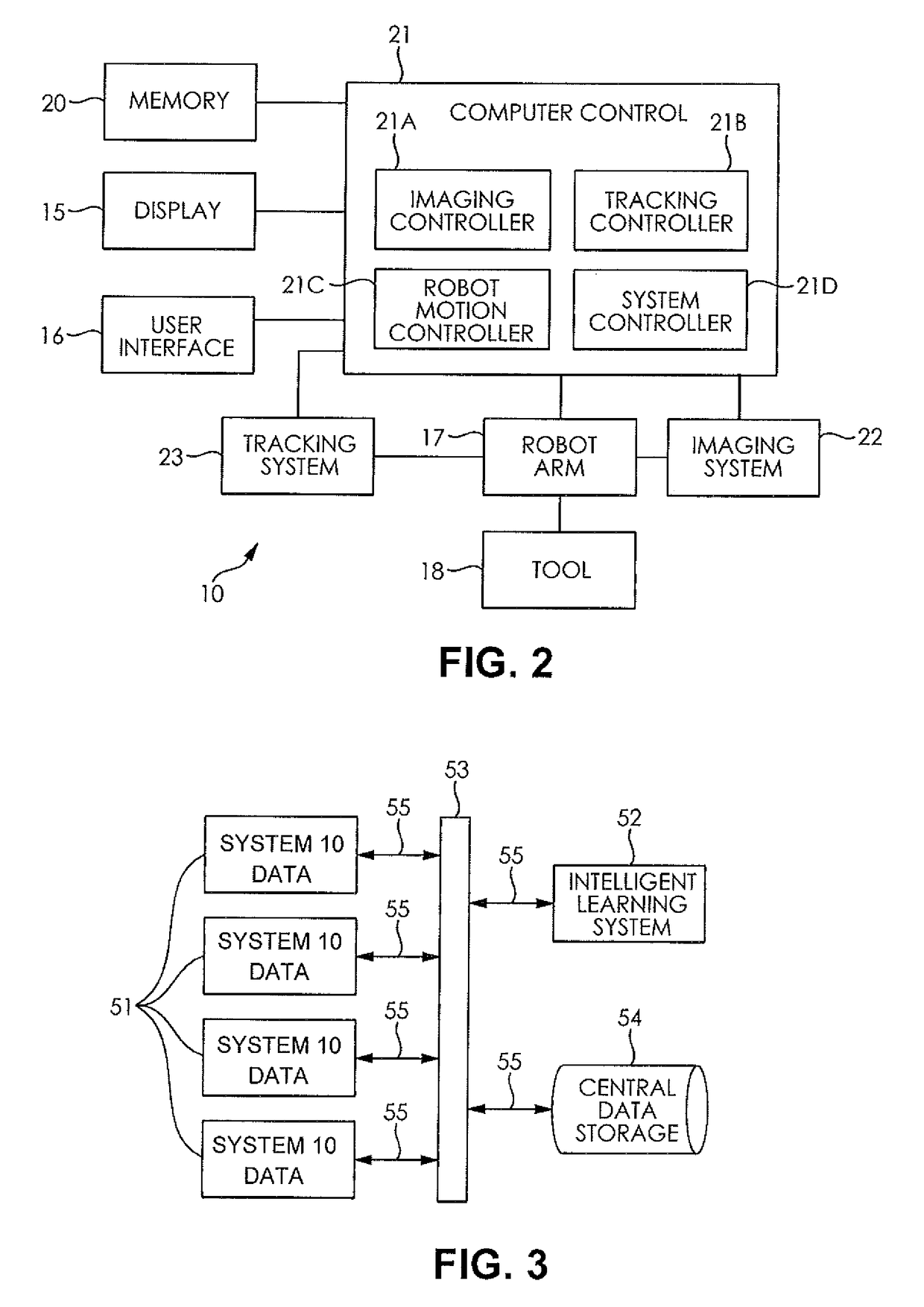System and method for automating medical procedures
a medical procedure and system technology, applied in the field of system and method for automating medical treatment procedures, can solve the problems of not teaching the source of information that the robot can provide, the procedure is then subject to the limitations of the dentist's skills and dexterity, and the limitation of navigation assisted dental treatmen
- Summary
- Abstract
- Description
- Claims
- Application Information
AI Technical Summary
Benefits of technology
Problems solved by technology
Method used
Image
Examples
Embodiment Construction
[0079]The following detailed description and appended drawings describe and illustrate various exemplary embodiments of the invention. The description and drawings serve to enable one skilled in the art to make and use the invention, and are not intended to limit the scope of the invention in any manner. In respect of the methods disclosed, the steps presented are exemplary in nature, and thus, the order of the steps is not necessary or critical.
[0080]The system for automating medical procedures (SAMP) according to the invention is a comprehensive and flexible system for automating medical, health and dental treatment procedures. Treatment procedures include any of modifying, removing, or delivering hard and soft bodily tissues, materials, prosthetic parts and biomedical devices; wherein the virtual modeling of the treatment area results in more precise treatment procedures when compared to state of the art procedures.
[0081]In the dental field, SAMP is conceived for restorative trea...
PUM
 Login to View More
Login to View More Abstract
Description
Claims
Application Information
 Login to View More
Login to View More - R&D
- Intellectual Property
- Life Sciences
- Materials
- Tech Scout
- Unparalleled Data Quality
- Higher Quality Content
- 60% Fewer Hallucinations
Browse by: Latest US Patents, China's latest patents, Technical Efficacy Thesaurus, Application Domain, Technology Topic, Popular Technical Reports.
© 2025 PatSnap. All rights reserved.Legal|Privacy policy|Modern Slavery Act Transparency Statement|Sitemap|About US| Contact US: help@patsnap.com



